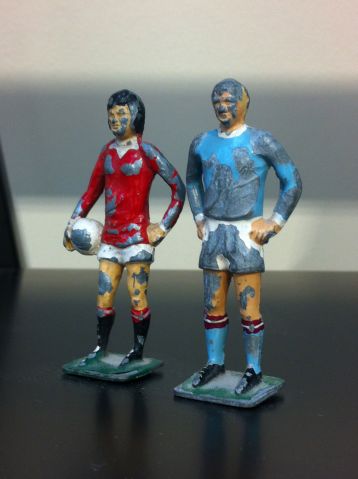Sometimes the work you think you’re going to make when you get to the studio and what you actually make are two very different things. Wednesday’s studio session was a classic example of this. I produced something totally unexpected, the work influenced and determined by what had been going on around me, the things that were on my mind …
Such as, an article I read recently which reported that David Cameron had given his backing to a proposed £15 million library and museum, planned as a permanent memorial to Margaret Thatcher. And then, a few days ago, a photograph that Tim Stoner, an artist I discovered through Twitter, had posted – a photograph of Margaret Thatcher and Jimmy Savile, suggesting it’d be ‘a good one for the walls’ of the new Thatcher museum. He was, of course, being ironic.
I’d seen a similar photo to this before, but never with the pair of them holding up a cheque and a leaflet with the slogan NSPCC is great! on it. The deep irony of either of them supporting a children’s charity won’t elude you, I’m sure.
Some things just stick – this image certainly did and, as is so often the case, it sparked off memories of all sorts of other things I had forgotten about – objects and other paraphernalia that have lain buried in piles of boxes in storage and all the different emotions and issues relating to them.
The image here, from a print, is one of them. It’s a print that caught my eye as I walked past a local market some years ago. It doesn’t have a title but I can see the name S Pearson and the date, 1970 on the front. I felt compelled to buy it – the girl’s tearful, sad expression reminded me of another print I already had – of a young boy crying, tears streaming down his face. It’s called The Crying Boy and is a mass-produced print of a painting by Italian painter Bruno Amadio.
The Crying Boy print actually hung on the dining room wall of a children’s home I once worked in. I’m going back to the early part of the 1980s here – the interior of the home was dated and old-fashioned and in desperate need of modernising. It had probably last been decorated in the late 60s, hence the age of this particular print. But that aside, whenever I’m reminded of it, I’m always utterly amazed that a print of a young child crying could ever be deemed appropriate to hang on the walls of a care home.
I’m looking forward to starting work on a pile of prints I have of The Crying Boy in due course, but Wednesday was all about the image of a sad looking, young girl. I silenced her by placing a piece of plaster firmly across her mouth, reminiscent of the intervention I made to the china figurines in my ‘Sweet Nothings’ work. I thought a lot about children in care while going through the process of placing the tape across their mouths – gagging them, silencing them, depriving them of their voice.
In the process, I was struck by the contrast of the sweet and innocent appearance of these young ceramic doll-like figures – a huge contrast to the not-so-sweet, disturbed internal worlds of so many looked-after girls in institutional care homes. Like the numerous victims of Savile’s abuse (both girls and boys and adults alike), many of these children felt that they had never had a voice, let alone one to use. And even if they did, the sad reality is that many of them were rarely listened to, or believed – hushed and shushed into staying silent – keeping secrets.






